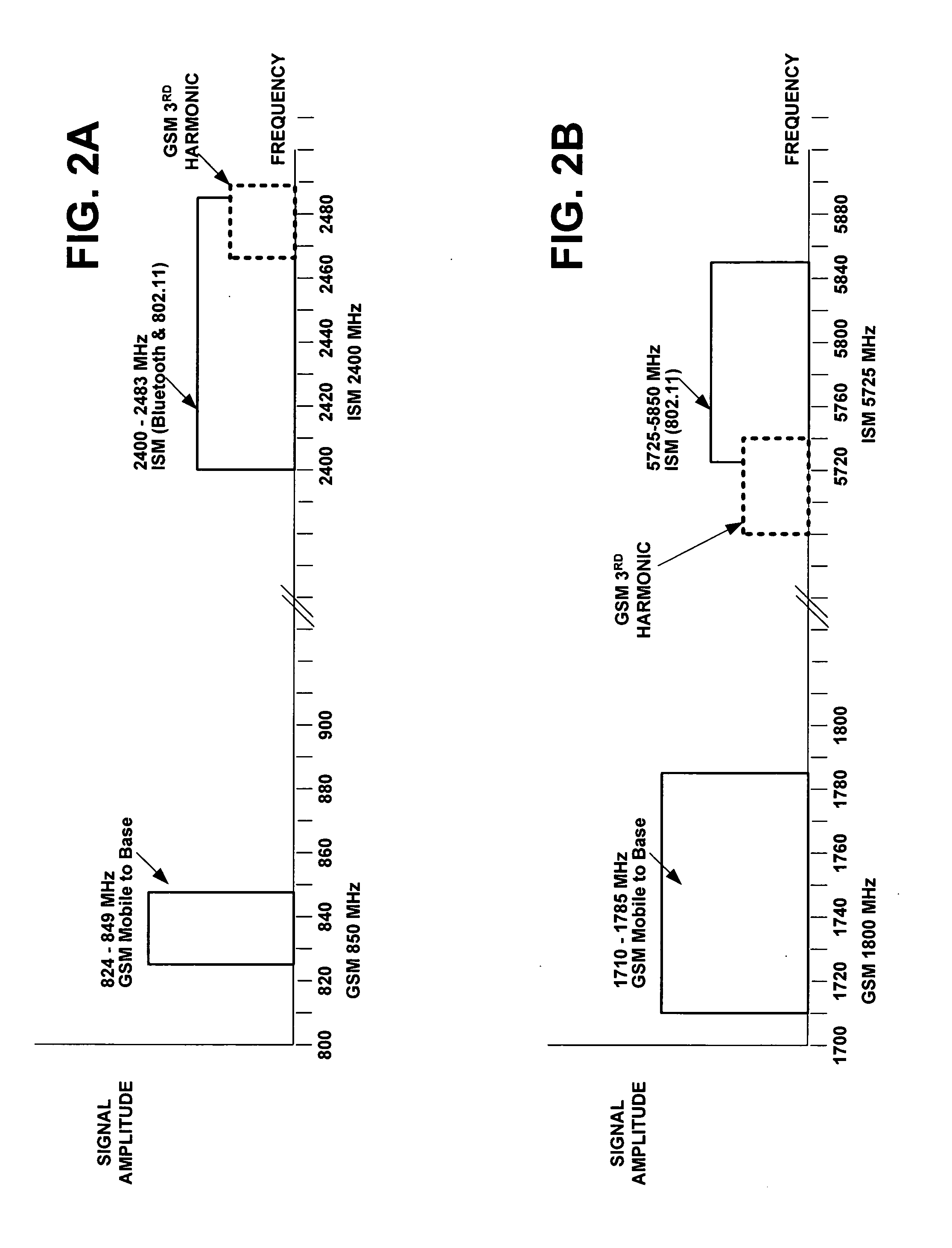Method for avoiding interference from a cellular transmitter to the 2.4/5GHz ISM band
a cellular transmitter and ism band technology, applied in the field of avoiding interference, can solve problems such as possible mutual radio interferen
- Summary
- Abstract
- Description
- Claims
- Application Information
AI Technical Summary
Benefits of technology
Problems solved by technology
Method used
Image
Examples
Embodiment Construction
[0050]FIG. 1 is a network diagram showing a GSM / WLAN / Bluetooth wireless communications device 100B having a combination of a GSM cellular telephone unit, a WLAN communications unit, and a Bluetooth communications unit. The wireless communications device 100B is wirelessly connected via Bluetooth antenna 102B to a Bluetooth headset 101B and its antenna 107B over wireless path 106B. The wireless communications device 100B is wirelessly connected via WLAN antenna 103B to a WLAN access point 140B in WLAN coverage area 150B over wireless path 108B. The wireless communications device 100B is wirelessly connected via GSM antenna 105B to a GSM base station 186 and its antenna 185 over wireless path 184, according to an embodiment of the present invention. A similar second GSM / WLAN / Bluetooth wireless communications device 100A is shown wirelessly connected via Bluetooth antenna 102A to a Bluetooth headset 101A and its antenna 107A over wireless path 106A and connected via WLAN antenna 103A t...
PUM
 Login to View More
Login to View More Abstract
Description
Claims
Application Information
 Login to View More
Login to View More - R&D
- Intellectual Property
- Life Sciences
- Materials
- Tech Scout
- Unparalleled Data Quality
- Higher Quality Content
- 60% Fewer Hallucinations
Browse by: Latest US Patents, China's latest patents, Technical Efficacy Thesaurus, Application Domain, Technology Topic, Popular Technical Reports.
© 2025 PatSnap. All rights reserved.Legal|Privacy policy|Modern Slavery Act Transparency Statement|Sitemap|About US| Contact US: help@patsnap.com



